Think about how Asians, especially the Chinese, were parodied, if not outright vilified in Western pop culture. Sometimes it was subtle, the way the Chinese or Japanese pronounced English was often exaggerated in comics and films. Sometimes it was very overt, with characters presented with bright yellow skin and narrow eyes. This trend goes back to 1929 when the British writer Sax Rohmer created a villain named Dr. Fu Manchu. At the end of the 19th century and the start of the 20th the "Orient" was seen as a place of mysticism, where ancient magics were real and closely guarded. The British colonists and Western Culture by contrast were always the shining example of civility and modern science. Minorities were very often subservient if not outright villains in many pulp stories. Dr. Manchu was bent on global domination using a combination of science and magic. The terms used to describe the character were more demonic than human. It was something to consider that Fu Manchu was almost as old as Mickey Mouse, and almost as well recognized in that era. He had been used to perpetuate some ugly stereotypes or decades, not solely in book form but in film as well. This character would become a template for evil Asians that would be used again and again. Although he was an alien Ming the Merciless, ruler of the Planet Mongo (yep they went there!) was very much an Asian stereotype. The character first appeared in the 1934 Flash Gordon comic strips by Alex Raymond. Ming could be considered the tyrant that Fu Manchu would become if he had conquered the Earth.
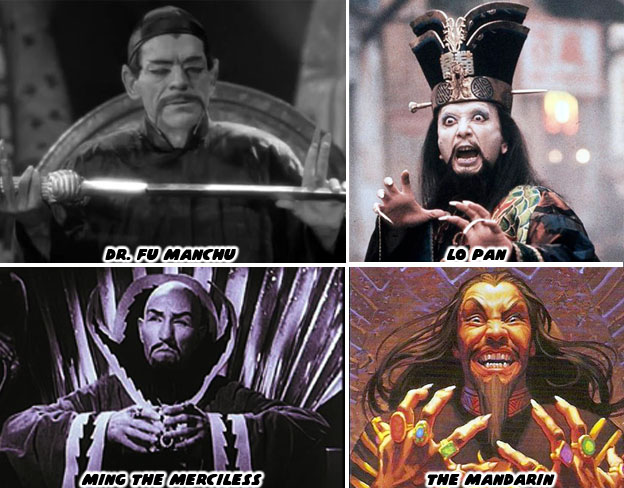
A few decades later, in 1964 to be precise, Marvel comics introduced the world to the Mandarin. The villain featured in Tales of Suspense would become the greatest rival to Iron Man. The Mandarin had acquired magical rings, which were actually alien artifacts. They allowed him to do various things, from shooting bolts of electricity to controlling minds. His design and purpose was not very far removed from Fu Manchu. This was odd considering that Marvel was a very progressive company, they featured minorities in several comics and presented some main character with different religious beliefs as well. Unfortunately the design of the Mandarin relied on trope, he was so obsessed with domination that it diminished his presence. It was unique however that the hero that used the most advanced robotics would have to do battle with mystical elements. It helped make Iron Man stand out from his contemporaries in the end.
The USA did a lot of changing following the civil rights era. Minorities began turning up as recurring characters in television shows and were presented in a favorable light in film. Eventually writers and comic artists grew tired of the stereotypes that had been placed on Asian characters. Director John Carpenter created an immortal wizard named Lo Pan in his 1986 cult-hit Big Trouble in Little China. The character was every absurd element from Fu Manchu, Ming and the Mandarin all rolled into one. The film placed the classic martial artists in the modern world. It was a send up some kung-fu tropes, the fantastic details remained with evil fighters who could shoot lightning from their fingertips and even fly. Many Asian actors were used as both the heroes and villains in the movie. This film was such a refreshing change of pace that it went on to influence the creation of Mortal Kombat. Yet the progressive view that John Carpenter had was the exception rather than the rule.
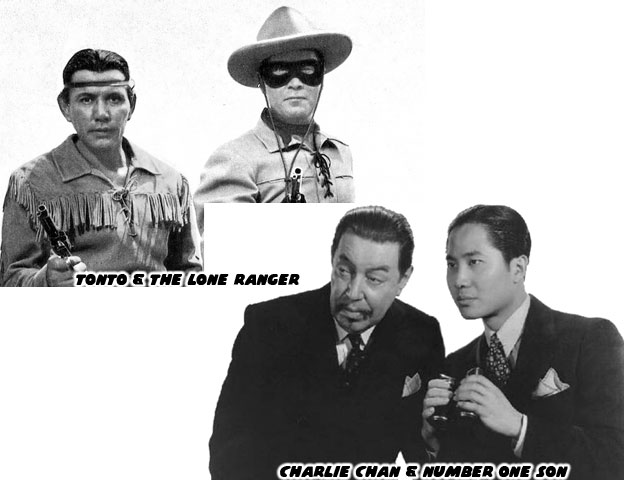
Producers and network executives had little to no faith that a minority actor could carry a role. This went back to the days of black and white film. The producers were afraid that the western audiences would never watch a film or TV show that didn't feature a white actor. Because of this many characters were recast, rewritten or completely ignored. In the ugliest instances a white actor wore blackface, or in the case of Fu Manchu or the detective Charlie Chan they wore "yellow face." Warner Oland was a Swedish actor who played Charlie Chan in several movies. The makeup department would tape down his eyelid to make him look "Asiatic." The features that revolved around the heroic minority would often cast actual Asian actors to play supporting roles. For example Keye Luke, a Chinese born American actor, played "number one son" Henry Oswald Lee Chan in the Charlie Chan films. By casting minorities the producers hoped to lend some sort of credibility to the lead actors as well as the stories they were telling. The downside was that the actual minority was never trusted to carry a leading role. It was a pattern that followed Hispanic and native characters as well. Canadian actor Jay Silverheels played Tonto, opposite Clayton Moore's Lone Ranger. He was a great character, a positive minority and one of the pioneering actors on network television. Yet neither he nor Keye Luke would ever be called to be the star of their own series. I wish I could say that things changed over the years but entering 2016 there was still very little minority representation on television. The shows featuring minority actors were almost all segregated into their own sitcoms. Things had not progressed very far in the century following the invention of film and television.
In fact things have not changed very much on the video game front either. The youngest of the major entertainment mediums has a lot of catching up to do. I could get upset all I want about F.A.N.G., Rufus, Birdie or any of the other Street Fighter characters and it wouldn't make a bit of difference. Why should I take Capcom to task when the western-produced games had very little representation, or diversity? How many games could you name that had a minority lead? How many could you name with a white character? How many franchises have been built around minority characters? How many around white characters? Stop and think about that for a moment. Go back through your mental index of game characters, of franchise characters and see how many you can name. Of those how many are male and how many are female? Of those how many are Asian, Hispanic, Black or Native?
I would argue that the fighting game has the most diversity of all the genres. Minority characters do have a leading role in many fighting games, and are usually presented in classical martial arts uniforms. Granted most leads are Japanese but those games are often produced in Japan. Just as most white leads in games are from western-produced titles. The diversity of characters and fighting styles is one of the things that keeps audiences coming back to the genre. Street Fighter has, or at the very least had, some of the most positive and influential minority casts ever created. These characters weren't perfect in their first incarnation but they did get better with revisions. If I have one complaint about the most recent additions to the Street Fighter lineup it would be how little they seem to be revised before they are added to the lineup. Many of the new characters in the game are forgettable, I would go so far as to say they are throw away designs. They are added to give the lineup a feeling of diversity but end up being nothing more than a gimmick character from a particular country. F.A.N.G. is no exception, he is just one more character that will have his 15 minutes and then fade away while Ryu, Chun-Li and the rest of the original World Warriors remain. So what is it that F.A.N.G. lacks when compared to the earlier designs?
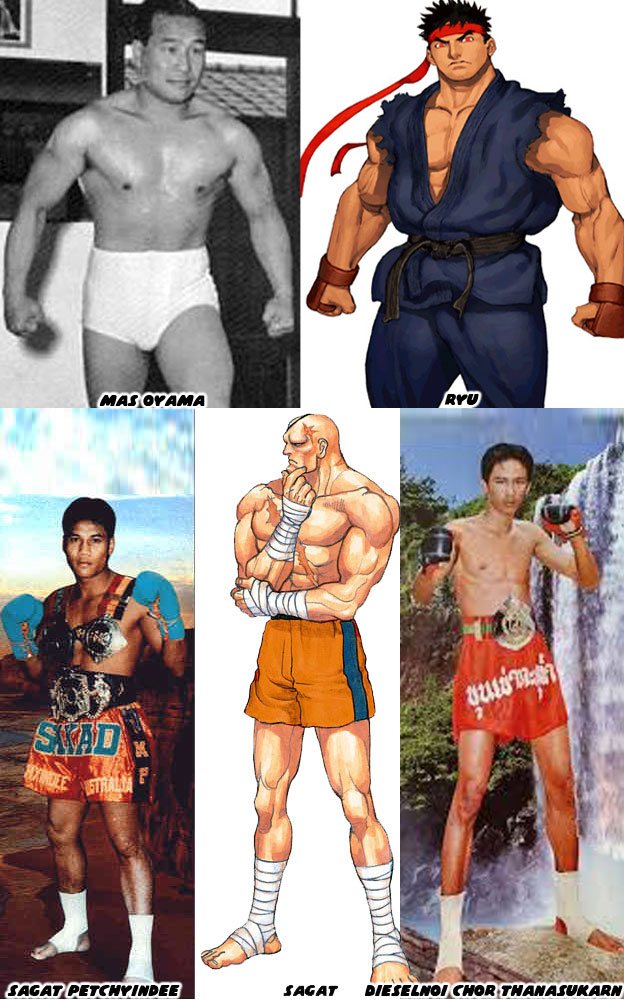
The new characters lack roots. In fact most of the new characters added in SF IV and SF V lack an understanding of the fighting arts that they represent, and in many instances, the actual martial artists that shaped history. The first Street Fighter was based very much on the life and times of Mas Oyama and Yoshiji Soeno. The rivals in the game were inspired in part by actual martial artists and martial arts movie characters. Even the gigantic Sagat was based on actual muay thai fighters, Sagat Petchyindee and Dieselnoi Chor Thanasukarn. The fighting arts Sagat and Ryu used were exaggerated versions of real forms. These amazing abilities looked great in comics and cartoons and turned out to be perfect for a video game. The second generation of Street Fighter characters expanded on the same principal. A burly sailor would become Zangief, his previous name of Vodka Gobalsky was deemed inappropriate. A new name was pulled from an actual wrestler that the Capcom designers would watch on television. The most racially insensitive characters, Dhalsim and Blanka, were greatly toned down and ended up including details from actual history as well as cinema. What F.A.N.G. is missing, and for the most part many of his contemporaries is that connection to the martial arts and actual fighters.
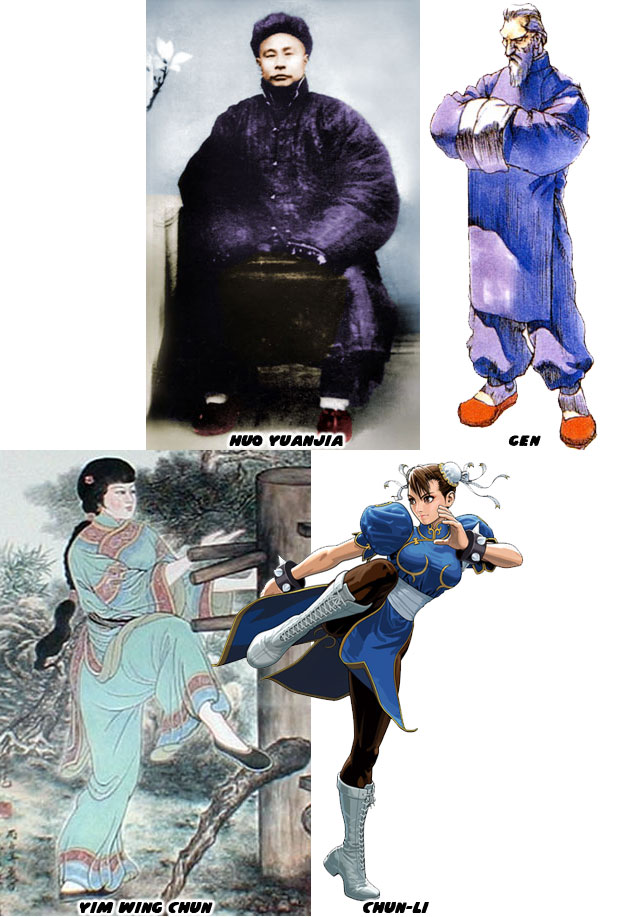
F.A.N.G. is the latest kung-fu master inserted into the canon of Street Fighter. He comes on the heels of some of the greatest Chinese characters in the genre. People like Gen and Chun-Li were pulled form legend. They were given moves and back stories that were worthy of cinema. Yet F.A.N.G. is in a completely different category. He doesn't have a pin that you can attach the design to. Just as you cannot point to the reference used for Rufus or Hakan, two of the saddest character designs ever featured in a Street Fighter game. F.A.N.G. gets to replace Sagat in the story. You would think he would be an intimidating character as one of the new Shadowlaw / Shadaloo Generals. Except that he isn't. You would think that his moves would be based on some ancient brutal Chinese system, but they aren't. F.A.N.G. exists for the same reason that Rufus exists. This is a character that the Producer finds value in. Like George Lucas saying that Jar Jar Binks was his favorite character, I'm sure Yoshinori Ono thinks F.A.N.G. fits right in as well despite what the audience reaction has been. But there is a catch to his design, a different way of looking at him just like any design. Some retouching, some refinement can save any character. Look at the roots of the franchise designs and see what you can learn.
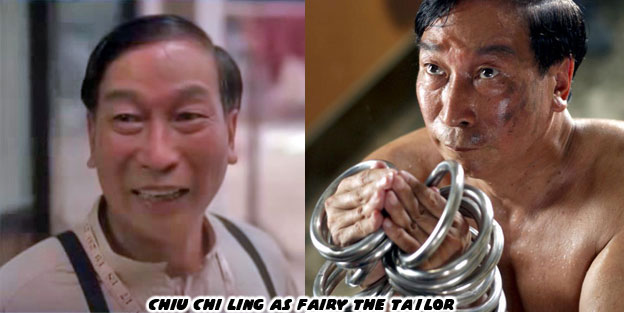
The way F.A.N.G. behaves before or after matches means little, and does not necessarily make or break the character. It is absolutely okay to have a flamboyant, or even effeminate character in a fighting game. While the look of F.A.N.G. may be closer to the harpist assassins from the film Kung-Fu Hustle, the character should have had the presence of Fairy, the tailor. In the film veteran actor Chiu Chi Ling played the character. Mr. Ling was an actual master of Hung Gar, one of the hardest striking forms of kung-fu. Yet Fairy was presented in a very soft and almost dainty manner, which made his role all the more interesting. The character he played was living a normal life in a small town. People did not know that the unassuming tailor was actually a powerful martial artist. This was masterful storytelling. The character was really brought to life in the action scenes. Fairy would become a one-man wrecking crew and any semblance to his effeminate personality disappeared as he destroyed mobsters with his bare hands. Yet Mr. Ling was not the first Chinese martial artist who played a dual role well.
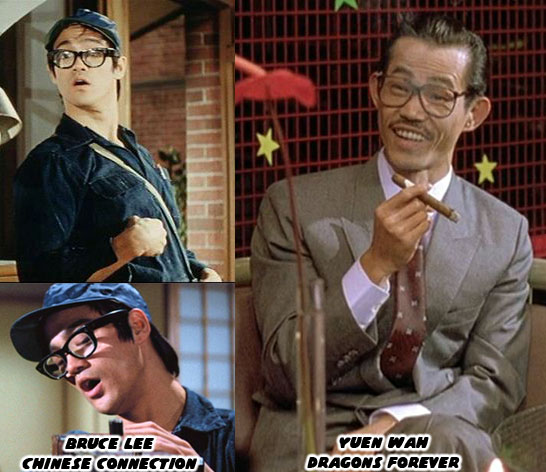
The unassuming Chinese character was portrayed well by Bruce Lee in the Chinese Connection aka Fists of Fury. To infiltrate the bad guy's hideout he played a mousey telephone repairman. It was his fighting ability and not his appearance that did all of the talking. Some of the most unassuming fighters have been villains. The character actors that play them do such a good job that you can't wait for the good guy to beat them up. This could be seen in the character Boss Wah, played by another martial arts veteran Yuen Wah, in the film Dragons Forever. Boss Wah looked and acted like an absolute weasel, choosing to strike Jackie Chan and his friends when their backs were turned. He was a cigar smoking crime lord, skinny and unassuming. He surrounded himself with some dangerous bodyguards, including former kickboxing world champ Benny "the Jet" Urquidez. At first glance you would think the character in the suit was a wimp. However despite his appearance and mannerisms he was an amazing fighter and capable of holding his own against the rest of the cast. Yuen had actually appeared in several Bruce Lee films and even served as Lee's double on some of the stunts. F.A.N.G. by comparison did not quite sell himself as a fighter. Or rather the designers at Capcom did not really sell the character as a fighter. He was lanky and overconfident in himself, saying that he would beat his opponent in two minutes and then striking an absurd victory pose if he did win. The character was flamboyant but not endearing like Fairy, he was a weasel without the vicious attacks of Boss Wah. F.A.N.G. threw poison balls from his sleeves and flew by flapping his arms. These weren't really moves or abilities that could be attached to any real system or any fighter living or dead. Capcom simply did not convince me that this character was right for the game and the series.
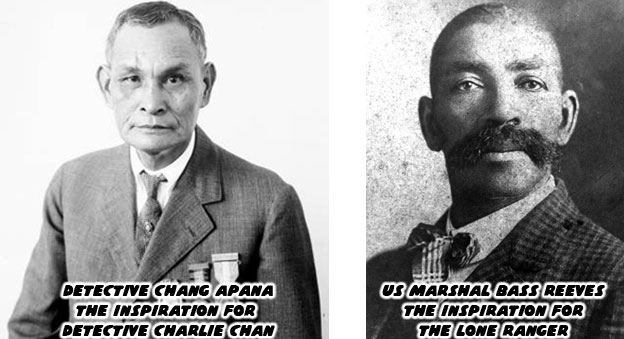
The entertainment industry has been whitewashing history for some time. The real world is much more diverse and interesting than any video game, movie or book could ever be. Think back about the ugly caricature that was Fu. Manchu, or how Charlie Chan stereotyped a population. How was F.A.N.G. any different from these representations? Think back about what a great hero the Lone Ranger was, according to history modeled after Texas Ranger Captain John R. Hughes. What a fantastic role model he turned out to be to several generations of mostly white children. Now imagine that if minority children had been exposed to something different, something that was closer to reality. What if they learned that the author Earl Derr Biggers based Charlie Chan on an Chinese-Hawaiian Detective named Chang Apana. He would have been a great minority and mixed-ethnicity role model. Or consider that the Lone Ranger may have been based on an escaped-slave-turned Deputy US Marshall Bass Reeves. Bass actually wore disguises and had Native American friends that helped him capture criminals in the old west. How amazing the films and television shows would have been to the minorities growing up here as well. They deserved to have heroes and villains modeled on reality rather than fantasy. This is what Capcom sometimes forgets. Mas Oyama may have been the basis for Ryu but let us not forget that he was Korean and not Japanese. He was such an amazing karate fighter that he influenced a nation that was and continues to be very biased against Koreans.
This is why I will always push back on Capcom when I think they are doing a disservice to the series. They have a chance to review and revise each and every character before introducing them. Trying to make changes after the fact is impossible. Capcom needs to think about how they are representing minority characters. Just because Street Fighter V is introducing a new Chinese, adding a Brazilian female (Laura) or Arab male (Rashid) into the lineup doesn't mean the studio is being more inclusive. If the woman is there primarily because she is sexy, or if the Arab is there just to fill a Middle-Eastern quota then why should we care? A lot of people in Mexico were happy that a masked wrestler was included in SF IV. They overlooked his silly moves and mannerisms because there was finally some representation in the game. It didn't matter if the representation was positive or negative as long as it existed. These fans, just like fans from around the world, are desperate to be represented in the series. They will accept stereotype, trope or sexism as long as they get a character in the game. Capcom needs to look internally and see what they can do to make better characters and a better game in the process. If they worked a little bit harder and tried to present positive representation they might create something profound. What do you think about F.A.N.G. and the other new characters? I would like to read about it. As always if you enjoyed this blog and would like to sponsor me please visit my Patreon page and consider donating each month, even as little as $1 would help make better blogs and even podcasts!
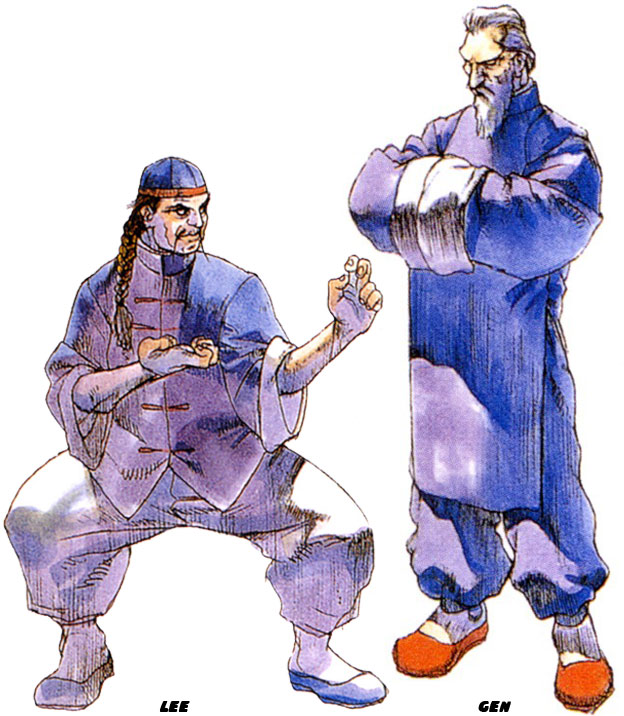

Hey Mex, long time reader, 1st time commenter. I've been interested in seeing your thoughts on the new SFV characters, so I'm looking forward to more.
ReplyDeleteIt is certainly a shame Fang (periods too unwieldy) made it into the cast like this. The other V newbies aren't perfect, but they at least don't seem to be jokes or complete mockeries of other cultures.
One wonders why the current designers seem to only see the surface of another culture or people, and not the underlying details. This seems especially strange from Ono, considering he seems to travel all over the world for PR, thus should be able to at least bring back an expanded worldview to the rest of the team.
As for the other SFV newbies, like I said, not perfect, but at least not jokes. Necalli's their new big bad and seems to be very intimidating. A murderous superpowered psycho Aztec warrior is odd, but he's at least not Fuerte. Rashid seems too safe a design and the tech stuff on him is superfluous, but he seems harmless enough. Laura, hmm, I admit I found her very fun during the online Beta, so I might be biased, but I like her. They sexed her up like most of their modern female designs and took some questionable liberties with her outfit/look, but at least she seems to be a proud Jiu-Jitsu practitioner under that.
Sorry if that's a big much, but you asked ;)
LaughingDragon, thanks for the reply, I appreciate it. I have no idea if anybody reads these posts or not because I rarely get any comments, unless of course they are from a spam bot. I don't understand why the designers seem to go on a surface understanding of a culture. With traveling abroad and the internet there is no reason to remain ignorant. Rashid was very much a safe design and Laura does have some good qualities. I'll be talking about both in the future. Up until F.A.N.G. I thought that the new characters were okay and I hadn't seen the new Rufus until that moment. Oh well, better luck next time.
DeleteHaha, well, your knowledge is intimidating. Some people might not know how to respond and don't.
DeleteMight also be that you're tucked away here on your personal blog and CapcomUnity, who can say.
Re: new designs, 3/4 decent on the starting "new challengers" compared to Street Fighter IV's 1/4 is at least an improvement. Even Super II didn't get 4/4, so I'm mostly positive about "next time".
I, for one, appreciate your insights and value your opinions on this blog. I think you've nailed it with your critique of F.A.N.G. Everything about him seems silly from his face, to his mannerisms. Even his name is ridiculous(does it even stand for anything or does it simply sound "cool"?) I wouldn't be surprised if the designers thought it just sounded cool and didn't even bother thinking further than that. I remember rolling my eyes when the character was first revealed. Looking at him face to face with the likes of Ryu- who is rendered really well- makes F.A.N.G appear all the more out-of-place and too silly.
ReplyDeleteI'm also interested in your point of view on the over-sexualized female characters. Perhaps it's only my imagination. As a child growing up with the series it didn't seem as if female characters were put in the game to add sex appeal. sure, they were attractive or cute but there was more to them than that. When I see how R.Mika, Laura, and even Cammy have been presented thus far (thankfully, they re-edited Cammy's "crotch shot" intro) it's clear that Capcom are putting more of a focus on these character's sex appeal. Sure, characters like Zangief and Urien are nearly nude but they are presented as "strong" not "sexual". Chun-Li can be sexy and strong while actually showing very little skin. As a heterosexual male in his early 30s I find this new(?) focus on the female character's sex appeal to be somewhat demeaning to these characters rather than a selling point. This isn't a "PC" thing either, as Mai from KOF uses her sex appeal as part of her actual character, the same can be said of Poison from Final Fight. I guess my point is that I find this trend out of place in Street Fighter's representation. Sorry for the rant, I hope that I was able to express my view well.
Humayoun Ibrahim, thank you for the feedback. It is obvious when you put characters side by side that you can see who doesn't really belong. Funny, silly or serious characters have to be believable, they have to work within the continuity of the series and right now I don't think Capcom is really convincing fans that the new characters belong in the game. I will be addressing the sexualized updated characters in a future blog, thank you for sharing your opinion on that. I am concerned that some people are really offended that Capcom toned down the butt slap for R. Mika and are circulating a petition saying to bring it back. I don't understand the priorities on that. I thought Change.org petitions were used to get politicians to change their opinion on a hot topic issue. Not to tell a game studio that they want more cheesecake in their fighting game.
DeleteHi Mex! I read your blog posts as well and find them insightful and entertaining. Don't think nobody is listening! :)
ReplyDeleteYour knowledge of martial arts lore and kung fu movies is simply staggering.
I don't always agree with your opinions, but I look forward to and appreciate reading your take on Capcom's creative decisions and you've also added wonderful insight into the culture(s) that shaped their past fighting games. Your texts certainly points me towards old kung fu movies I might have missed and other bits of cool info, be that vintage manga and old pro wrestlers!
I adore the golden era of Capcom, back when Bengus, Kinu Nishimura, Akiman and the rest of their signature illustrators created that colorful and distinct company look. I work as an illustrator, so my main interest/focus lies more on the art side of things rather than martial arts cinema and culture. I love examining Capcom's illustrations and game artwork and trying to trace the influences that made up the Capcom style. For example, how Capcom's 8 and 16-bit Disney adaptations changed how they approached their color schemes and how classic Tom & Jerry episodes fed into Darkstalkers style of animation, etc. One of my favorite blogposts of yours was the color breakdown of the Street Fighter characters and their focus on simplicity. It reminded me of Milton Glazer's approach to graphic design and his thoughts on "clean" aesthetics.
Personally I find that SF5 is shaping up to be a better looking game than SF4, which seemed a step backwards from Third Strike. I also think that they've done a better job with the new characters this time. We'll see if anyone leaves a lasting impression and becomes a permanent addition to the roster.
I am okay with FANG, but he's certainly no home run. I do think Street Fighter must be allowed to have cartoonish elements and exaggerated features, since that's how Bengus and his colleagues all drew back in the day. FANG could be considered a racist stereotype for sure, but SF also has several positive Chinese characters so I think such criticism might be deflected as a result. And like you mentioned in the examples above, FANG at least has predecessors in Kung Fu movies and I do think that type of "slithering assassin" fits somewhat in the Martial arts canon and thus belongs somewhat in a Street Fighter setting. (Even if FANG might not be the coolest rendition of that character type we've seen thus far. )
As far as Ono's sometimes goofy/eccentric choices... It's been hit or miss for sure, but I think there is a strength in the Japanese habit of making odd creative decisions and finding strange combinations. When successful it can give character designs awesome visual flairs, whimsy and uniqueness that more conventional western titles would never make. I love Sodom's odd combo of Football gear and Samurai armor for instance. El Fuerte being a chef and Luchador might not have been a successful attempt, but I do applaud Ono's team for making such choices. It's obvious that truly genius visual minds like Bengus and Akiman are no longer on the team to make the sort of ingenious combinations that resulted in icons... But I do believe it is in their spirit whenever an El Fuerte shows up, misguided or not. For my money, Street Fighter should have one foot in the martial arts world, but then also have one foot somewhere completely else and out of left field.
Anyways! Thanks for a fun blog, please keep writing, they are a pleasure to read!
/Billy
CaptainN2 / Billy,
DeleteThanks for the reply, I appreciate it! I'm also a fan of the golden era of Capcom designs, they pretty much defined my youth. Visually I do agree that SF V is progressing much better than IV. The characters do seem a lot more animated and stylized this time around. The series has certainly survived with funny or odd characters but in 3D these figures look way out of place. One of the down sides is the design team is not only different but also much smaller than the old group. There aren't as many different points of view to consider, the diversity of styles and influences and insight into fighting forms, fight culture and even comics and movies doesn't seem to be as broad. This ultimately limits the types of characters the studio is able to create. Maybe things will get better with age and I hope they do. Thanks again for the comment and hope you enjoy the blogs.